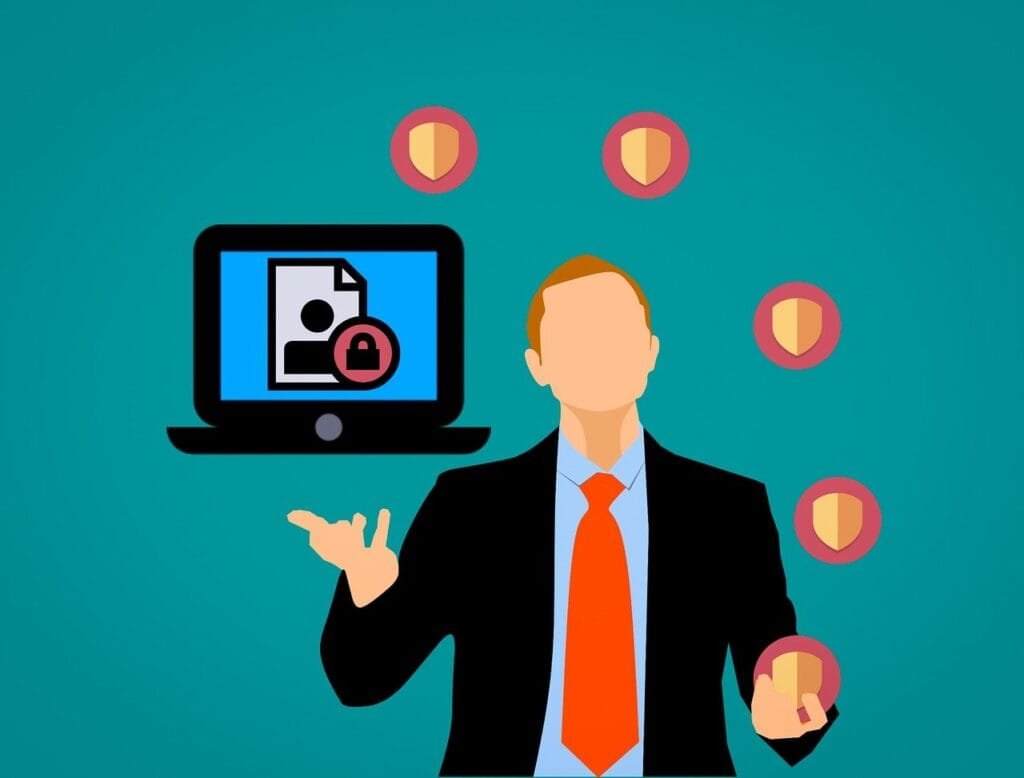(This Article has been revised, edited and added to, by Poulomi Chakraborty.)
In a world saturated with emails, standing out in a crowded inbox is the modern marketer’s Herculean task. With customers’ expectations soaring, a one-size-fits-all approach no longer cuts it. Enter the game-changer: dynamic content in emails. For businesses—from agile startups to global corporations—the ability to send tailored content to each subscriber can be the bridge between an opened email and one that’s relegated to the trash.
Dynamic content provides a pathway to create bespoke experiences, ensuring that every recipient feels understood, valued, and engaged. Not only does it bolster engagement, but it can also significantly boost conversions, fostering brand loyalty and driving revenue. In this comprehensive guide, we’ll unpack the world of dynamic email content, guiding you from its foundational principles to the most avant-garde techniques and trends.
Constant Contact is a popular choice for businesses seeking user-friendly email marketing software with a focus on customer engagement.
IbadHussain
Head of Marketing- Embedwiz
Understanding Dynamic Content
Dynamic content in email campaigns represents a powerful tool in the digital marketing arsenal, especially for startups looking to carve out their niche in a crowded market. The strategic application of dynamic content goes beyond mere personalization; it’s about creating a conversation with your audience that feels both personal and timely. In this expanded understanding, we dive deeper into the strategic deployment of dynamic content to elevate your email campaigns.

The Art of Data-Driven Storytelling
At the heart of dynamic content lies the art of data-driven storytelling. Startups can leverage dynamic content to narrate a story that evolves with their audience’s interactions with the brand. This approach requires a deep understanding of your data and the ability to craft messages that adapt and grow more relevant over time. For instance, a startup could use a customer’s purchase history and browsing behavior to create a serialized email narrative, where each email builds on the last, guiding the customer through a curated journey of relevant products, educational content, or engagement opportunities.
Strategic Content Personalization
Personalization, when done right, can transform a standard email campaign into a powerful engagement tool. Startups should consider dynamic content as a means to tailor every aspect of the email experience, from the subject line to the call to action. The goal is to create an email that speaks directly to the recipient, addressing their needs, preferences, and pain points. To achieve this, founders need to harness their CRM and analytics tools to segment their audience meticulously, not just by demographic data, but by behavior patterns, purchase history, and engagement levels. This deep segmentation allows for the creation of emails that resonate on a personal level, increasing the likelihood of conversion.
Leveraging Advanced Technologies
Emerging technologies such as AI and machine learning can take dynamic content to the next level. Startups, often more agile and open to new technologies, can implement these tools to analyze customer data and predict future behavior. By integrating AI into their email marketing strategies, startups can automate the creation of hyper-personalized content that anticipates the recipient’s needs, interests, and potential questions. This proactive approach to email personalization can significantly enhance the customer experience, fostering loyalty and encouraging repeat business.
Crafting an Agile Content Strategy
The digital landscape is constantly evolving, and so are the preferences and behaviors of your audience. An agile content strategy allows startups to remain flexible and responsive to these changes. Dynamic content should not be set in stone; it needs to be regularly reviewed, tested, and optimized based on ongoing analytics and A/B testing results. Startups should cultivate a culture of experimentation, where every email campaign is an opportunity to learn more about their audience and refine their approach to personalization. This iterative process ensures that your dynamic content remains effective and engaging, even as your business and your audience grow and change.
Building Meaningful Connections
Ultimately, the power of dynamic content lies in its ability to build meaningful connections with your audience. Startups should view each email as a touchpoint in a broader relationship-building process. By delivering content that is consistently relevant, useful, and personalized, startups can turn casual subscribers into dedicated brand advocates. The strategic use of dynamic content can help create a community of engaged users who are not just customers but also fans and ambassadors of your brand.
Why is Dynamic Content Important?
The power of dynamic content isn’t just in its adaptability but in its ability to foster deeper connections:
- Improving Engagement Rates: Personalized content grabs attention. When an email aligns with a subscriber’s interests and needs, they’re more likely to engage, leading to higher open and click-through rates.
- Offering a Personalized Experience: Today’s consumers expect brands to “know” them. Dynamic content facilitates this one-to-one communication, making subscribers feel valued.
- Enhancing Click-through and Conversion Rates: Relevant content doesn’t just engage; it persuades. Tailored product recommendations or personalized offers can significantly boost conversions, turning subscribers into customers.
I also focus on optimizing my emails for mobile devices, as well as leveraging automation and dynamic content to create highly personalized emails.
Ravi Kumar
Founder- Lastest mod APK
Dynamic Content vs. Static Content

The debate between dynamic and static content in email campaigns is crucial for startup founders seeking to make their mark in the digital world. Understanding the strategic application of each can significantly enhance your marketing efforts, driving engagement, and ultimately, conversion. This section expands on the nuances of leveraging both dynamic and static content to craft emails that resonate with your audience.
Harnessing the Power of Context with Dynamic Content
Dynamic content shines in its ability to bring context to your communications. By integrating real-time data and user behavior, you can ensure that your messages are not just timely but deeply relevant to each recipient. For startups, this means going beyond surface-level personalization; it’s about understanding the journey of your users and anticipating their needs. A strategic approach involves mapping out user behavior to identify patterns and triggers that can inform your dynamic content. For example, if analytics reveal that a segment of your audience frequently engages with specific content types or products, tailor your emails to reflect these interests, creating a seamless experience that extends from your website to their inbox.
The Role of Static Content in Establishing Brand Consistency
While dynamic content offers personalization, static content is invaluable for maintaining brand consistency and messaging. It serves as the foundation of your email, delivering key messages that are relevant to all recipients. For startups, this is an opportunity to reinforce your brand identity, values, and unique selling propositions. Static content should not be overlooked as mere filler; instead, it should be crafted with the same care and strategic intent as dynamic elements. Use static content to build a narrative around your brand, one that speaks to your entire audience, creating a sense of community and shared values. This could include a consistent email header, footer, or a regularly featured section that highlights your brand story or core values.
Strategic Integration for Optimal Impact
The true art lies in the strategic integration of dynamic and static content. Startups must find the right balance, ensuring that emails are not only personalized but also cohesive and reflective of the brand as a whole. This requires a thoughtful approach to content planning and design. Consider the layout of your emails: dynamic content should flow naturally within the static framework, creating a coherent message that engages the reader from start to finish. Furthermore, strategic integration extends to the timing and frequency of your emails. Analyze user data to determine not just what to send, but when to send it for maximum engagement.
Continuous Evolution and Optimization
In the fast-paced digital ecosystem, what worked yesterday may not work tomorrow. Startups must adopt a mindset of continuous evolution and optimization, particularly when it comes to dynamic and static content. Regularly review your email performance metrics to understand what resonates with your audience. Don’t be afraid to experiment with the balance between dynamic and static content, as well as with different content types and formats. A/B testing can be incredibly revealing, providing insights that help you refine your approach and better align with your audience’s preferences and behaviors.
Building a Dialogue
Ultimately, the goal of any email campaign, whether utilizing dynamic or static content, is to build a dialogue with your audience. Startups should see each email as part of a larger conversation, one that is constantly evolving based on user feedback and behavior. This means listening as much as you speak, using user engagement and feedback to guide your content strategy. Encourage interaction by asking for feedback directly within your emails, and show that you value this input by adapting your content accordingly. This two-way communication fosters a deeper connection with your audience, turning subscribers into loyal customers and brand advocates.
When to Use Each Type for Optimal Results:
- Dynamic Content: Best used when you have a clear understanding of your audience segments and can offer value through personalization. For instance, sending region-specific offers or showcasing products based on browsing history.
- Static Content: Opt for this when the message has universal relevance or when segment-specific data might not be available or relevant.
In essence, while dynamic content offers a tailored approach, static content provides consistency. The key for marketers, especially those guiding startups or large corporations, is to strike a balance, ensuring that each email sent is both personalized and universally relevant.

Basics of Setting Up Dynamic Content
Dynamic content, for all its advantages, is not a mere plug-and-play solution. It’s an art form married to data science. The process starts long before the email campaign goes out, rooted in rigorous data collection, meticulous segmentation, and the selection of the right tools.
Crafting a Data-centric Foundation
Before diving into the mechanics of dynamic content, it’s imperative to establish a solid data foundation. This begins with a comprehensive data collection strategy that encompasses not just demographics but also behavioral data, engagement metrics, and purchase histories. Startups must prioritize the integration of their CRM and marketing platforms with their email service providers (ESP) to ensure a seamless flow of data. This integration enables a more nuanced understanding of your audience, facilitating the creation of dynamic content that resonates on a personal level. Strategic data collection also involves privacy considerations; transparency with your subscribers about how their data is used builds trust and ensures compliance with data protection regulations.
Segmenting with Precision
Audience segmentation is the cornerstone of effective dynamic content. However, segmentation must go beyond basic demographics to include psychographics, behavioral patterns, and engagement levels. Startups should consider advanced segmentation techniques such as predictive analytics, which leverages AI to forecast future behaviors based on past actions. This approach allows for the anticipation of customer needs, creating opportunities for highly targeted and timely dynamic content. Precision in segmentation also means continually refining your segments based on new data and insights, ensuring that your dynamic content remains relevant and engaging.
Designing for Personalization at Scale
The challenge for startups is not just to personalize but to do so at scale. This requires a thoughtful approach to content creation and template design. Startups should invest in email templates that are flexible and easily customizable, allowing for the insertion of dynamic content blocks without sacrificing brand consistency or design integrity. Additionally, consider the user experience across devices; responsive design ensures that your dynamic content looks and performs optimally, whether it’s viewed on a desktop or a mobile device. Designing for personalization at scale also means preparing for variability; test your emails thoroughly to ensure that your dynamic content renders correctly for different segments and that personalization tokens are populated accurately.
Leveraging Automation for Timely Engagement
Automation is a powerful ally in the deployment of dynamic content. Automated workflows can trigger personalized email campaigns based on specific user actions or milestones, ensuring timely and relevant engagement. For startups, setting up automation should be strategic; identify key touchpoints in the customer journey where dynamic content can have the most impact. This might include welcome series, abandoned cart reminders, or milestone acknowledgments. Automation not only ensures efficiency but also allows for real-time personalization, enhancing the customer experience and driving engagement.
Continuously Evolving Through Testing and Feedback
The setup of dynamic content is not a one-time task but an ongoing process of optimization. Continuous A/B testing allows startups to refine their dynamic content strategies based on what resonates best with their audience. Test different aspects of your dynamic content, from subject lines and personalization tokens to content blocks and calls to action. Additionally, actively seek feedback from your subscribers. Surveys and feedback forms integrated into your emails can provide valuable insights, allowing you to adjust and improve your dynamic content strategy over time.
We work the power of personalization. Using dynamic content and acclimatized messaging, we produce a more applicable and engaging experience for our subscribers, leading to advanced open and click rates.
Peter Michaels
CEO- Yeespy Technology Co., Limited
Segmenting Your Audience
Audience segmentation is the bedrock upon which successful dynamic content strategies are built. For startups, where resources are often limited and the pressure to deliver ROI is high, understanding and implementing advanced segmentation techniques can be a game-changer. This section dives deeper into strategic insights and actionable advice to enhance audience segmentation for dynamic email campaigns. Dynamic content thrives on segmentation, the practice of dividing your email list into smaller, more specific subsets.
Criteria for Segmentation:
- Demographics: Age, gender, occupation, or education level.
- Behavior: Past email interaction, website activity, or purchase history.
- Purchase History: Regular buyers vs. one-time customers vs. potential customers.
Importance of Micro-Segmentation for Fine-tuning Content: The more granular your segments, the more tailored your content can be. Micro-segmentation, such as segmenting based on specific product interests, can lead to highly specialized content that resonates deeply with subscribers.
Developing a Deep Understanding of Your Audience
The first step in effective segmentation is developing a comprehensive understanding of your audience. This goes beyond demographic information to include psychographic data, behavioral patterns, and engagement levels. Startups should leverage every interaction—be it through the website, social media, customer service encounters, or purchase transactions—to gather data that paints a fuller picture of their audience. This deep understanding enables the creation of segments that reflect not just who your subscribers are, but what they value, how they behave, and what they need from your brand.
Utilizing Behavioral Data for Predictive Segmentation
Predictive segmentation harnesses the power of behavioral data to forecast future actions of subscribers. This approach involves analyzing past interactions, such as email opens, website visits, and purchase history, to predict how different segments might respond to future campaigns. Startups can use this insight to tailor their dynamic content not just to what subscribers have done, but to what they are likely to do. This forward-looking strategy can significantly improve the relevance and timeliness of your emails, enhancing engagement and conversion rates.
Crafting Persona-based Segments
Creating buyer personas is a strategic way to approach segmentation. Personas are detailed character sketches of your ideal customers, based on real data and educated assumptions. For startups, developing a set of buyer personas can help personalize email campaigns at scale. Each persona represents a segment of your audience with similar attributes, motivations, and pain points. Dynamic content can then be tailored to address the specific interests and needs of each persona, making your emails more relevant and compelling.
Dynamic Segmentation for Real-time Relevance
Dynamic segmentation takes audience segmentation to the next level by allowing segments to evolve in real time based on new data and subscriber actions. This approach uses automation and AI to adjust segments as subscribers interact with your emails and website. For example, a subscriber who clicks on a link related to a specific product category could automatically be moved to a segment interested in that category. Startups can leverage dynamic segmentation to ensure their email content is always aligned with the current interests and behaviors of their audience, maximizing the relevance and effectiveness of their campaigns.
Continuous Optimization through Feedback Loops
The segmentation process is never truly complete. To remain effective, it must be continuously refined and optimized based on subscriber feedback and changing behaviors. Startups should establish feedback loops that allow them to collect and analyze subscriber responses to email campaigns. This could include direct feedback through surveys or indirect feedback inferred from engagement metrics. By regularly reviewing and adjusting your segments based on this feedback, you can ensure that your dynamic content remains highly targeted and effective over time.
Email Service Providers (ESPs) Offering Dynamic Content Features
For startups venturing into the nuanced world of email marketing, selecting the right Email Service Provider (ESP) that offers robust dynamic content features is crucial. This choice can significantly impact the effectiveness of your email campaigns and, ultimately, your startup’s ability to engage with and convert your audience. In this section, we delve into strategic considerations and actionable advice for startups looking to make an informed decision regarding ESPs with dynamic content capabilities.
Assessing Your Startup’s Specific Needs
Before exploring the vast array of ESPs, it’s vital for startup founders to conduct a thorough assessment of their specific needs and objectives. Consider the complexity of the dynamic content you plan to implement, the size of your email list, your team’s technical proficiency, and the level of customization and automation you require. Understanding these parameters will help you identify which features are non-negotiable and which ESPs can best accommodate your startup’s growth trajectory. It’s not just about choosing the most feature-rich ESP but selecting one that aligns with your current capabilities and future aspirations.
Exploring Integration Capabilities
In today’s digital ecosystem, your email marketing efforts cannot exist in isolation. The ability of an ESP to seamlessly integrate with other tools and platforms—such as your CRM system, analytics tools, and e-commerce platform—is paramount. These integrations enable a fluid exchange of data, enhancing the precision of your dynamic content and automating personalized interactions based on real-time user behaviors and preferences. When evaluating ESPs, consider how well they play with the other technologies you rely on. This interoperability can streamline your workflows, reduce manual effort, and create a more cohesive user experience across all touchpoints.
Commitment to Innovation and Support
The digital marketing landscape is perpetually evolving, and your ESP should be a partner that grows and innovates alongside your startup. Investigate the ESP’s track record for introducing new features, especially those related to dynamic content and personalization technologies. Furthermore, the level of support and resources offered by an ESP can be a game-changer for startups. Access to dedicated support teams, extensive knowledge bases, and community forums can accelerate your learning curve and help you troubleshoot challenges more efficiently. Opt for ESPs that demonstrate a commitment to their clients’ success through robust support and continuous innovation.
Evaluating Scalability and Flexibility
Startups are inherently dynamic, with fluctuating needs as they grow and evolve. The ESP you choose should not only meet your current requirements but also have the scalability to support your expanding subscriber base and the flexibility to adapt to changing marketing strategies. Examine the pricing structures and plans of potential ESPs, paying close attention to how they accommodate growth in terms of subscriber numbers, email volume, and feature access. A scalable and flexible ESP is one that can be a long-term partner, facilitating your startup’s growth without imposing unnecessary constraints or requiring frequent migrations.
Conducting Comprehensive Testing and Demos
Finally, before making a commitment, take advantage of free trials, demos, and consultations offered by ESPs. This hands-on experience is invaluable for assessing the usability of the platform, the intuitiveness of the dynamic content features, and the overall fit with your team’s workflow. Encourage your marketing team to test drive the ESP, experimenting with creating and deploying dynamic content campaigns to gauge the platform’s capabilities and ease of use. This practical evaluation can provide deeper insights than any feature list or review, ensuring you make a well-informed decision that benefits your startup in the long run.
From automated welcome series to cart abandonment emails, SendinBlue enables businesses to nurture leads and build lasting relationships with customers.
GrahamMcCormack
Founder- Graham SEO

Strategies for Implementing Dynamic Content
Implementing dynamic content in email campaigns is a nuanced process that demands a strategic blend of creativity, data analysis, and technological savvy. For startups aiming to stand out in a crowded marketplace, leveraging advanced strategies for dynamic content can significantly enhance engagement and drive conversions. This section delves into strategic insights and actionable advice, expanding on ways startups can implement dynamic content more effectively.
The dynamic content feature of MailChimp allows me to create content blocks that adapt based on the recipient’s preferences, further enhancing engagement.
Pankaj Srivastava
CEO – Clinicspots
Crafting Contextually Relevant Content
Context is king in the realm of dynamic content. Beyond personalizing emails with the recipient’s name or location, consider the broader context of their interactions with your brand. Have they recently attended a webinar, downloaded a whitepaper, or abandoned a cart on your website? Use these contextual clues to tailor your email content, ensuring that it is not only personalized but deeply relevant to the recipient’s current relationship with your brand. For example, follow up a webinar attendance with an email that provides additional resources on the topic discussed, or an abandoned cart with a reminder that includes reviews or testimonials for the products they considered.
Personalization and segmentation are crucial to raising KPIs and enhancing open and click-through rates. We employ MailChimp’s automation for timely communication, utilizing triggered emails like welcome series and abandoned cart reminders.
Vikas Kaushik
Chief Commercial Officer- TechAhead
Integrating Real-Time Data for Immediate Relevance
The power of real-time data integration in email campaigns cannot be overstated. This involves using data points that are constantly updated, such as stock levels, weather conditions, or trending products, to customize content. Startups can harness real-time data to send emails that are not just personalized, but immediately relevant. For instance, a fashion retailer might send out dynamic emails showcasing umbrellas and raincoats to customers in regions currently experiencing rainy weather, or a tech company could highlight trending products in stock for tech enthusiasts.
Personalizing the Customer Journey at Every Stage
Consider the entire customer journey, from awareness to loyalty, when implementing dynamic content. Tailor your email content to meet the needs and interests of recipients at each stage of their journey with your brand. This means sending different types of dynamic content to new subscribers, active customers, and lapsed customers. New subscribers might receive educational content about your product or service, active customers could get personalized recommendations based on their purchase history, and lapsed customers might be enticed back with a special offer or update on what’s new. This strategic approach ensures that every email adds value to the recipient’s experience with your brand.
Leveraging User-Generated Content to Foster Community
Incorporating user-generated content (UGC) into your emails can significantly enhance their impact. This might include reviews, testimonials, or social media posts from customers. UGC not only serves as social proof but also helps build a sense of community around your brand. For instance, feature customer reviews or photos of customers using your product in your emails. This not only personalizes the email content but also encourages more customers to engage with your brand and share their experiences, creating a virtuous cycle of engagement.
Experimenting with Advanced Technologies
Embrace advanced technologies like AI and machine learning to further personalize and optimize your dynamic content. AI can analyze customer data at scale to predict future behaviors, tailor content more precisely, and even determine the optimal timing for sending emails to maximize engagement. Machine learning algorithms can continuously refine these predictions based on new data, ensuring that your dynamic content remains as relevant and engaging as possible over time.
Continuously Analyzing and Refining Strategies
The effectiveness of dynamic content is not set in stone; it requires continuous analysis and refinement. Regularly review your email campaign metrics—open rates, click-through rates, conversion rates—to gauge the success of your dynamic content strategies. Use A/B testing to experiment with different types of dynamic content, subject lines, and calls to action to see what resonates best with your audience. This ongoing process of analysis and refinement is key to maximizing the impact of your dynamic content over time.
Drawing from my experience, we’ve found that infusing personalized content, captivating subject lines, and strategic segmentation within our email marketing software yields remarkable results.
Paul Somerville
Editor-in-Chief- Electric Scooter Guide
Advanced Techniques in Dynamic Content Utilization
The digital landscape is ever-evolving, and with advancements in technology, the potential for personalization in email marketing is expanding exponentially. Leveraging these advanced techniques can provide your subscribers with a truly unique and engaging experience.
Geo-targeting
Showcasing Content Based on the Subscriber’s Geographic Location: Geo-targeting isn’t just about sending emails at a convenient local time. It can be used to offer region-specific promotions, reference local events, or even comment on current weather conditions. Imagine sending an offer for sunblock and beachwear on a sunny day or promoting indoor games and hot cocoa during a snowstorm. This hyper-relevance captures attention and feels serendipitous to the subscriber.
Personalizing with Predictive Analytics
Harnessing the power of predictive analytics transforms how startups engage with their audience through email. By analyzing historical data and behavioral patterns, predictive analytics can forecast future actions and preferences of subscribers, enabling startups to craft emails that resonate on a deeply personal level. For example, predictive analytics could identify which subscribers are most likely to respond to a particular offer or which products a subscriber is likely to purchase next. This approach allows for the creation of highly targeted and timely emails that not only meet but anticipate the needs and desires of your audience.
Enhancing Interactivity with Dynamic Elements
The inclusion of dynamic elements such as interactive polls, surveys, or even gamified content can significantly increase engagement rates. These elements invite active participation from subscribers, making the email experience more engaging and memorable. For instance, a startup could include a dynamic quiz related to their products or industry, with the results tailored to each subscriber’s responses. Not only does this add a layer of personalization, but it also provides valuable insights into your audience’s preferences and interests.
Creating Seamless Omnichannel Experiences
Integrating dynamic content across all marketing channels ensures a seamless and consistent experience for your audience, regardless of how they interact with your brand. This omnichannel approach might involve using dynamic content to create personalized landing pages that match the email content, or social media ads that reflect the interests shown in email interactions. For startups, this strategy can amplify the impact of their marketing efforts, creating a cohesive journey that nurtures leads more effectively across different stages of the funnel.
Utilizing AI for Content Optimization
Artificial intelligence (AI) offers unparalleled capabilities in analyzing data and optimizing content for maximum engagement. AI can help startups identify the most effective email copy, subject lines, and call-to-action buttons based on subscriber responses. Furthermore, AI can automate the personalization process, dynamically adjusting content to match the evolving preferences of your audience. This level of optimization ensures that each email is not only personalized but also optimized for engagement, driving higher conversion rates.
Implementing Dynamic Storytelling
Dynamic storytelling involves creating a narrative that evolves over time, based on the subscriber’s interactions with your brand. This technique can be particularly powerful for startups, as it builds a deeper emotional connection with the audience. By designing a series of emails that unfold a story tailored to the subscriber’s journey, startups can keep their audience engaged and looking forward to the next installment. This approach not only enhances engagement but also reinforces brand loyalty and retention.
Continuous Learning through Subscriber Feedback
Incorporating mechanisms for collecting subscriber feedback directly within your emails can provide invaluable insights for refining your dynamic content strategy. Whether through quick surveys, feedback forms, or interactive elements, this direct line of communication allows startups to understand what works and what doesn’t, straight from their audience. This continuous learning loop enables the iterative improvement of email campaigns, ensuring they remain relevant and impactful.
Mailchimp has been our go-to email marketing software due to its user-friendly interface and robust features. By fine-tuning our campaigns through personalization, A/B testing, segmentation, automation, and metrics analysis, we have seen positive results in boosting our KPIs.
Kiran Mehra
Co-founder and President- Goldspot Pens
Testing and Optimizing Dynamic Content
Even the most meticulously planned email campaigns can benefit from testing and optimization. By constantly refining your approach, you can ensure that your dynamic content resonates effectively and delivers optimal ROI.
#1. A/B Testing for Dynamic Content
Hypothesis Creation: Start with a clear hypothesis. For instance, “Including a subscriber’s name in the email subject line will increase the open rate by X%.”
Setting Up Control and Variant: To test this hypothesis, segment your email list into two: one with the subscriber’s name in the subject (variant) and one without (control).
Analyzing Results: After sending, measure the open rates for both segments. If the variant performs significantly better, consider adopting the personalization in your regular campaigns.
Mailchimp offers invaluable insights into customer preferences and engagement. By fine-tuning segmentations, we can target promotions to different client groups, from new customers to loyal regulars. Analyzing click-through and open rates, we continuously refine our content, ensuring relevance and appeal.
Anna Peterson
Creator- Salon Route
#2. Multivariate Testing
Testing Multiple Dynamic Components Simultaneously: While A/B testing focuses on one element, multivariate testing allows you to evaluate the impact of multiple changes. For instance, test different combinations of images and CTAs simultaneously to understand the most effective pairing.
#3. Feedback Collection
Using Surveys or Feedback Loops to Understand Subscriber Preferences: Direct feedback can be invaluable. Occasionally sending surveys asking subscribers about their content preferences, or what they’d like to see more (or less) of, can provide insights that data might miss.
#4. Regularly Reviewing and Updating Data Points
Ensuring Data Remains Current and Relevant: Dynamic content is only as good as the data powering it. Regularly update your subscriber profiles, removing outdated information or adding new data points. This ensures your content remains relevant and accurate.
Optimizing send times and meticulous monitoring have bolstered engagement and KPIs. Regular reflection and list maintenance fortify our subscriber base, ultimately driving enhanced campaign outcomes and fostering meaningful connections with our audience.
Huzaifa Ghayas
Head of Marketing- Mamallove

Overcoming Challenges with Dynamic Content
In the grand tapestry of digital marketing, dynamic content weaves a compelling narrative. Yet, even this powerful tool isn’t exempt from challenges. Recognizing these hurdles and strategically addressing them can enhance both your campaign effectiveness and subscriber trust.
#1. Ensuring Data Privacy
GDPR, CCPA, and Other Data Protection Regulations: Compliance with data protection regulations isn’t just a legal necessity; it’s fundamental for building subscriber trust. Whether it’s Europe’s General Data Protection Regulation (GDPR) or California’s Consumer Privacy Act (CCPA), marketers must ensure that they collect, store, and utilize data transparently and ethically.
Gaining and Maintaining Subscriber Trust: Beyond compliance, actively communicate with your subscribers about how you use their data. Transparency in your data usage policies and practices can go a long way in fostering trust.
#2. Avoiding Over-personalization
Striking a Balance to Avoid Seeming Intrusive: There’s a fine line between personalization that delights and that which feels invasive. For instance, referencing a product a subscriber viewed a day ago might feel relevant, but mentioning a product viewed several months ago might come across as surveillance. Striking the right balance is key.
#3. Technical Challenges
Ensuring Email Renders Correctly Across Devices and Email Clients: Dynamic content, especially when it incorporates advanced elements like interactive features or AI-driven personalization, can pose rendering challenges. Different email clients and devices might display content differently. Testing emails across multiple platforms can help mitigate this.
Addressing Issues with ESPs or Integration Points: Not all Email Service Providers (ESPs) support advanced dynamic content features. Similarly, integrating third-party tools (like an AI recommendation engine) can sometimes lead to glitches. Regularly review your tech stack and collaborate closely with your ESP and third-party providers to address issues.
Future Trends in Dynamic Email Content
In the rapidly evolving world of digital marketing, what’s innovative today may become standard tomorrow. As we cast our eyes towards the horizon, several emerging trends promise to further revolutionize the way we perceive and employ dynamic email content.
Advent of AR and VR in Emails
Possible Integration and Use Cases:
While augmented reality (AR) and virtual reality (VR) are predominantly associated with gaming and experiential marketing, their incorporation into emails isn’t far-fetched. Imagine an email where subscribers can virtually “try on” a product or experience a 3D representation of a holiday destination. Retailers could showcase products in 360-degree views, or real estate companies could offer virtual tours of properties. The possibilities are vast and could offer truly immersive experiences right within an email.
Increased Use of AI and Machine Learning
Predictive Analytics in Email Content:
AI and Machine Learning aren’t new to email marketing, but their applications will continue to evolve and expand. Beyond merely suggesting products, AI could predict and tailor content based on predicted life events, mood, or even the subscriber’s current weather. This next level of personalization would anticipate needs and wants, crafting emails that resonate on a deeply personal level.
Integration with IoT Devices
Sending Tailored Content Based on Data from Connected Devices:
The Internet of Things (IoT) has turned everyday items into data-generating devices. From smart fridges to fitness trackers, these devices provide a treasure trove of real-time, actionable data. Imagine receiving an email with meal recipes just as your smart fridge detects you’re running low on certain items, or workout suggestions from a fitness brand after your smartwatch notes a week of inactivity. The integration of IoT data promises hyper-relevant content tailored to real-time subscriber needs.
Wrapping it up
However, with great power comes great responsibility. While the tools and technologies exist, it’s crucial for brands and marketers to wield them ethically and strategically. Protecting subscriber data, respecting privacy, and ensuring a genuine human touch in every communication are essential in building and maintaining trust.
The future is undeniably exciting. As emerging trends such as AR-infused emails and AI-driven content personalization come to the fore, marketers will find themselves at the crossroads of technology and creativity, crafting experiences that not only sell but also inspire, educate, and connect.
Embrace dynamic content, but do so with intentionality, authenticity, and an unwavering commitment to the subscriber experience. In this dynamic dance of data and creativity, those who lead with empathy, innovation, and insight will undoubtedly emerge victoriously.
Read Next:
- How to use EmailOctopus: An Explainer
- How to Use Email Marketing Automation for Drip Campaigns
- 51+ Outstanding Email Marketing Tools to Skyrocket ROI
- Skyrocket Your Email Outreach ROI! Strategies (+Experiments) By 19 Experts
- 7 Best Email Marketing Software for Small Businesses: A Comparison
- List Building: 32 Tactics to Skyrocket Your Email List From 0 (Infographic)






















Comments are closed.